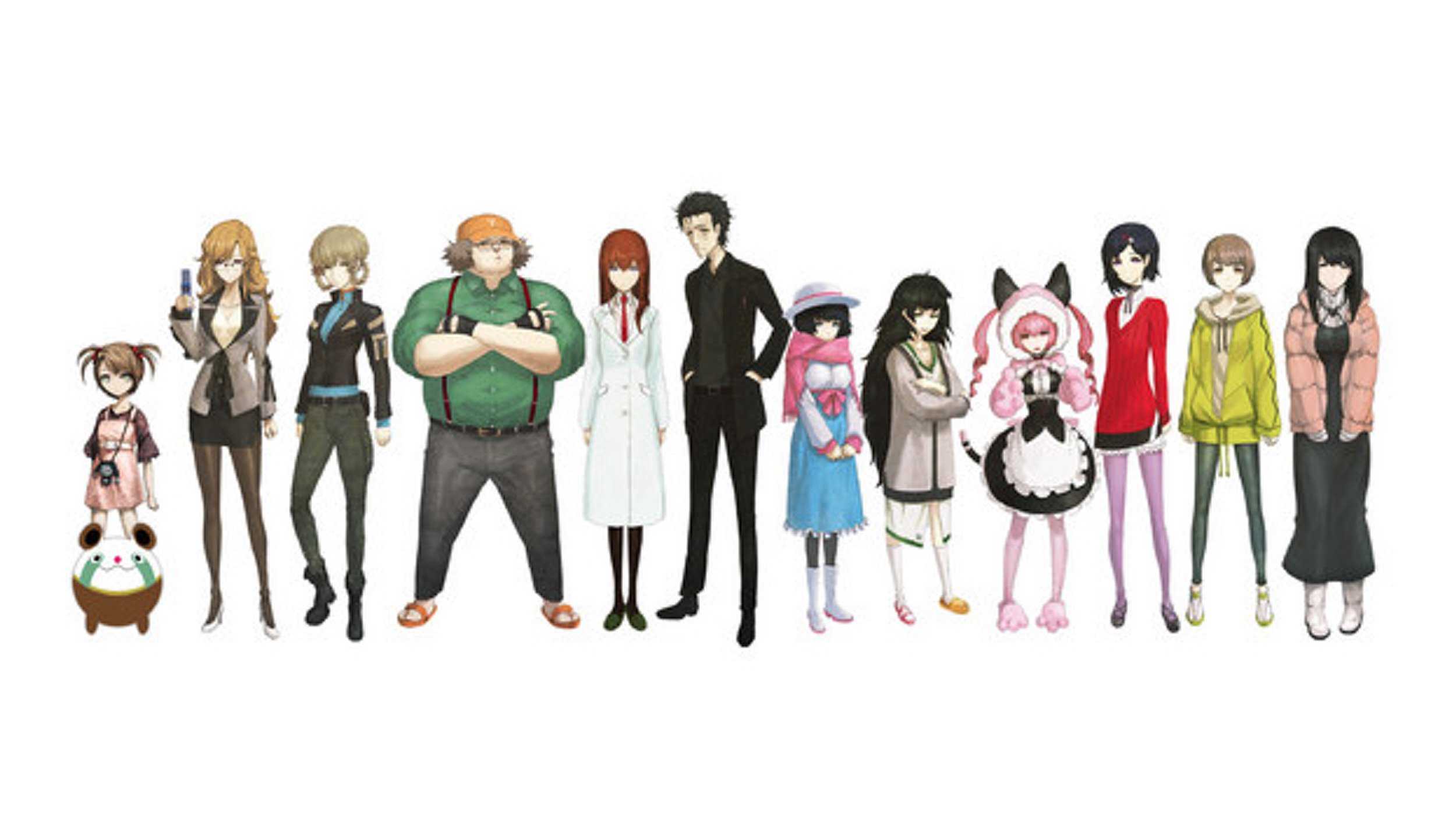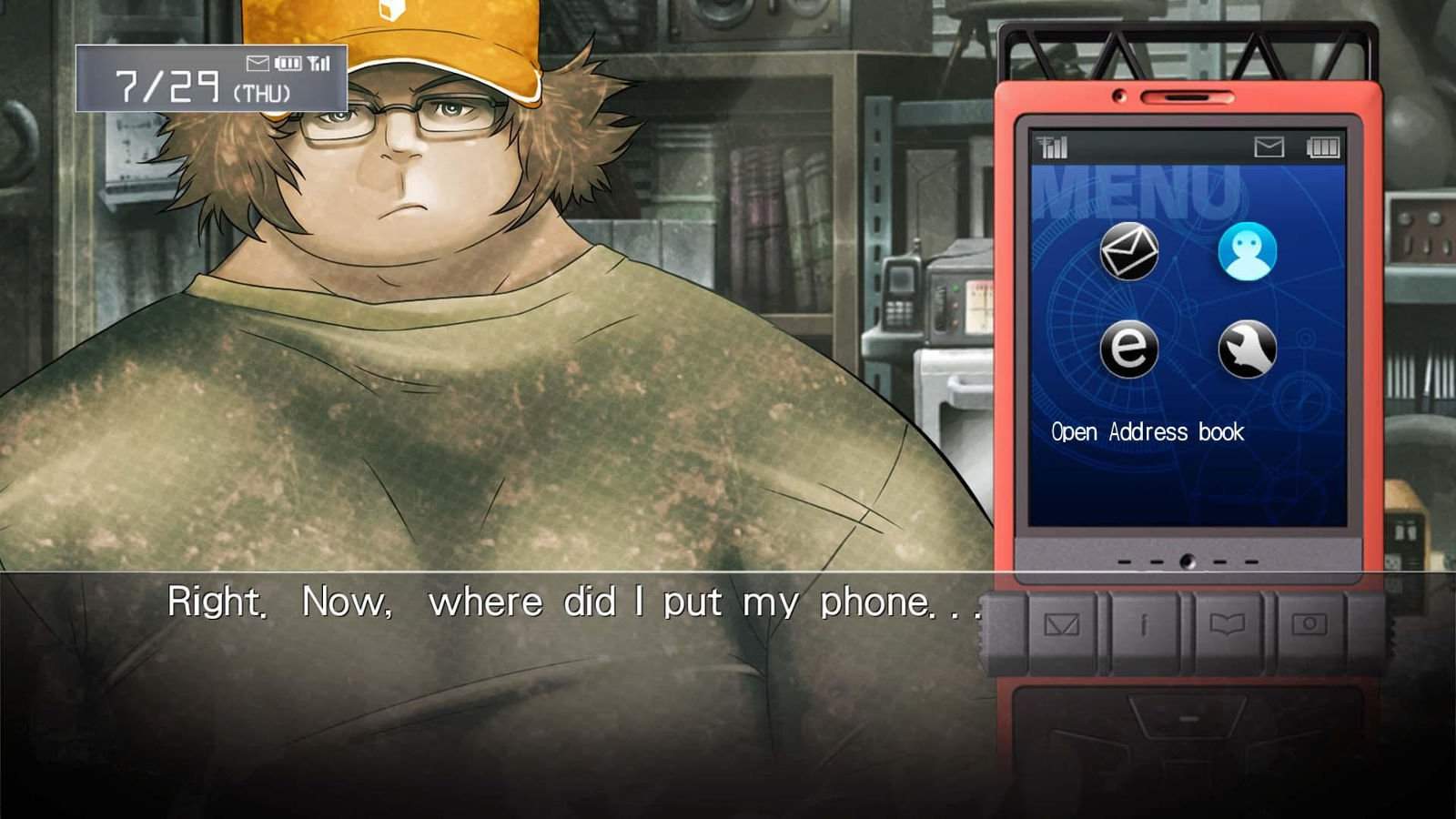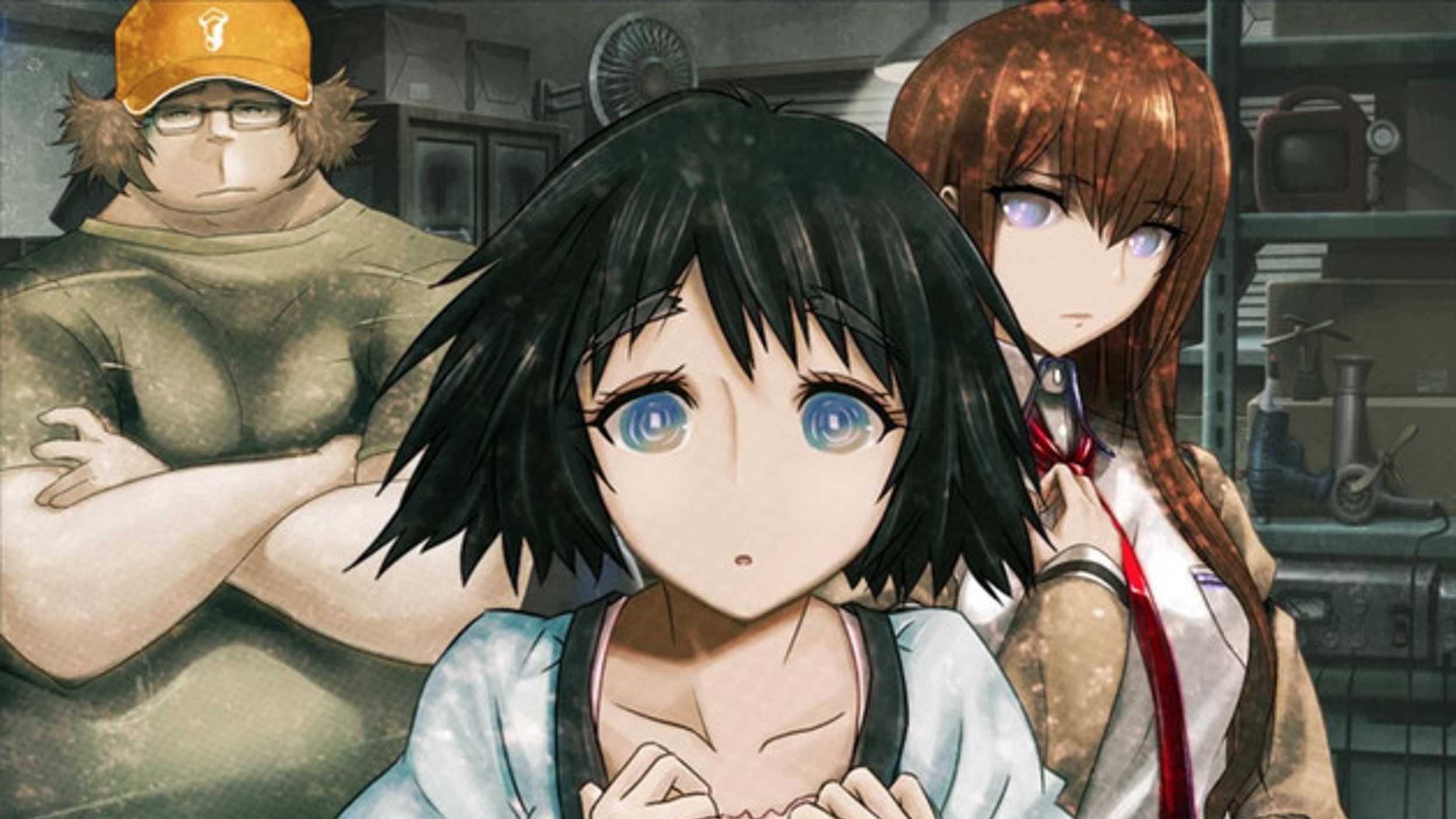Steins;Gate is a game that seems to drive the player forward with a need to find out what comes next. It is a game that constantly shifts away from the perceived norm, and it is great. I am a huge advocate for keeping reviews spoiler free. As such, you need not worry about major plot points spilling over and into the review below.
The age-old scientific premise of being able to travel in time was once said to be a possibility by mathematical genius, Albert Einstein. Since then, dreaming about the ability to traverse time has captured audiences around the world as a popular plot device in modern entertainment media. From travelling back in time to prevent a certain catastrophe, to traveling forward into an alternate timeline, time travel is a trope that has been utilised in many ways.
My first proper encounter with the concept of time travel in video games occurred when I played Final Fantasy VIII. It was a strange thing to comprehend: being thrust into another protagonist’s body in order to see an entirely different side of the story — and get pelted to death by small time inconsistencies that slowly have to fix themselves by the end of the game. Another excellent (and more obvious) example is Chrono Trigger, which features an extensive cast of characters that originate from different timelines and universes, and who come together to fight off a universal evil that threatens the entire time-space continuum.
More often than not, time travel in games is used as a means to advance the narrative of the plot. It is hardly ever used as an actual, scientific theorem with fleshed out ideas (Editor’s note: Quantum Break actually does this with aplomb). I guess the more scientific approach would just be boring… right? Instead, we get “fun” and “action packed” movies and games that forgo the laws of scientific discovery for the sake of entertainment. This is where Steins;Gate shifts away from the norm.
Steins;Gate seems to be a game that keeps the idea of time travel grounded. That is to say, it constantly surprises in the way that it attempts to keep the idea of time travel in a “real” and plausible context.
The Premise: Let us pause for a second and start at the beginning…
Steins;Gate is a text-based adventure game that presents itself as a visual novel. It is a republished, slightly enhanced game based on the original Japanese title of the same name that released in 2009. The game tells a fantastic tale of time travel that seems to incorporate science fiction and reality in a very real and grounded setting. It emphasises how fiddling with time can have significant repercussions on both the past and the future (never the present, because that is the time that you are always in).
Leading the cast is Rintaro Okabe, the protagonist, and inventor of “super useful gadgets” (most of the time they are not). Rather, he likes to think that his inventions will someday change the world. In his mind, Okabe thinks of himself as the mad scientist Hououin Kyouma. This character is Okabe’s alter-ego and is a Machiavellian man that wants to take over the world and bring it eternal chaos. The thing is, Okabe is constantly at odds with his alter-ego. As such, he struggles with whether or not the mad scientist is his real personality or just a “make believe” projection of what he wants to become?
Okabe’s inner turmoil leads him to accidentally “invent” time travel in his small two-room apartment/lab. The way it works, however, is quite unique. Instead of sending a person back and forth through time, the invention sends emails. This makes his invention the first actual gadget that works! As such, the player spends almost the entire first act of the game as Okabe, who is learning how time travel works.
As you might have guessed, time travel comes into play quite early on in the game. The gadget that Okabe develops has the ability to alter the timeline of events, effectively “rewriting” the memories of everyone around him. Excited to try out and test the full potential of his new gadget, Okabe and his friends start to play around with the idea of “time travel”. This is when things become weird. An organisation named SERN (Société Européenne de Recherche Nucléaire) tracks down the group of friends and attempts to capture them. Now it is up to Okabe and his friends to elude capture for as long as possible.
Cast and Characters: Traveling time and space is lonely, better get some help!
Steins;Gate is filled with hilarious references to popular culture. Okabe and his friends love to drink Dk Pepper, go to Starbecks, and visit @channel, a reference to the real-life 2Channel — a Japanese textboard that I used to visit every now and then during my Maplestory years. Other references include the use of a video site called MewTubel; and obviously, the big plot feature: SERN, which is based on the European Organisation for Nuclear Research (CERN).
All of these references are enhanced by an incredible cast of supporting characters.
Kurisu Makise is considered to be the main heroine of the game. She is a published neuroscience researcher, and a genius on just about all things science related. Mayuri Shiina is the one character that I loved right from the get-go. She is a long time childhood friend of Okabe that loves to create her own cosplay when she is not working her part-time job at the Maid Cafe, a cosplay restaurant. Itaru Hashida, called Daru by the others, on the other hand, is a bit more grounded. He is a hacker and good friend for both Shiina and Okabe. Daru is the “voice of reason” when it comes to decisions Okabe has to make. This is weird, though, as he tends to find something perverted in just about anything said by the others.
Both Daru and Shiina seem like very clichéd characters at first glance. As you go further into the story and their progression picks up, you slowly find that just about all of the characters, Daru and Shiina especially, have quite a lot of substance to them.

Other characters of note are Suzuha Amane, Luka Urushibara, Faris NyanNyan, and Moeka Kiryua.
Suzuha Amene is a part-time employee for Yuugo Tennouji, who is Okabe’s Landlord. She is constantly at odds with Makise, although it is never really revealed why. Luka Urushibara is a very close friend of Shiina. Although he looks and talks like a girl, he is very much a boy. The owner of the maid cafe that Shinna works for is called Faris NyanNyan (Editor’s Note: a subtle reference to Nyan Cat). She is also the most popular waitress. Faris’ part in the story feels like it is the smallest of them all. Moeka Kiryu, on the other hand, is a major addition to the cast, starting off when Okabe bumps into her. She is extremely protective of her mobile phone and very shy — she uses the phone to communicate, even when face to face.
As you meet all of these characters, it is easy to begin to feel overwhelmed. Although, at first glance, many of the characters abide to typical stereotypes; their complexities are soon revealed. This misdirection is excellent, and I feel that it was purposefully done. The writers knowingly took classic stereotypes and used them as bases for all of the characters. Coincidentally, the character development in Steins;Gate is where the game really shines. It is wonderful to go on a journey with these characters and to watch them grow and flesh out into memorable and full featured ‘people’.
One very important aspect of the game to take note of is that it is a visual novel. As fleshed out as the characters are, there is little to no animation and everything is hand-drawn. Think of it as a graphic novel that you can play.
Gameplay: With that out of the way, here is another twist!
Steins;Gate at first feels like an extremely linear game. As soon as you hit the five-hour mark, however, the game opens up with such grandeur that it almost feels like a totally different game. The choices you make in the game can weigh heavily on the people around you — this includes all friendly, and non-friendly characters. Most of the time, you will have to choose between benefitting one party over another. The big problem here is that these choices are not always obvious! The game may feel like it is pushing you forward down one singular path, but it is actually offering you subtle choices along the way.
You play most of the game using your in-game mobile phone. This is an oddly satisfying way to do things. I’ve only played two or three other visual novels in the past and they always only featured text boxes. Steins;Gate would rather have you interact with the game using its “Phone Trigger” system.
The use of Okabe’s mobile phone is intriguing to say the least. Do you choose to ignore the text or email that just came through? Do you answer it in haste while talking to another character? All of these tiny nuances will affect the game’s later scenes in some small way or another.

Perhaps the hardest thing to learn about the game is that it does not hold your hand… at all. Steins;Gate gives you no indication of what to do or where to go next. Furthermore, the choices you make might sound black and white on paper, but the game assumes that you can think of the time-based repercussions way down the road. The game takes it upon itself to assume that you, the player, can make heavy-handed decisions at a moment’s notice. It assumes that you have a driving curiosity and sort of prods you towards experimenting with various outcomes. This alone makes for incredible replayability.
There are many moments in the game where I felt that a message or email was taking too long. Upon opening the mobile phone, I discovered that I could send texts or call other characters as I wished. The game makes no mention of this – yet another mechanic that it assumes you already know how to use. It should also be noted that whenever this is possible and you want to do it: do it fast. Steins;Gate feels like it advances quite rapidly at times, without giving the player enough time to even notice.
My biggest frustration with the Phone Trigger system is that the game only gives you keywords. When clicked, Okabe will type out a longer correspondence. This is a lot like Fallout 4, where a predetermined keyword or phrase dictates the entire conversation going forward. A good example of this kind of gameplay is with reference to the mobile game called Lifeline — a nice little text-based game that also offers multiple outcomes. On a full-fledged title on the PC, however, this gameplay mechanic feels tiresome and should not be present. This is a minor annoyance, however, since you can save at any given time.
Conclusion: A visual novel for the ages
Ultimately, Steins;Gate is not a game for everyone. As a visual novel, it literally plays like mix between a comic book, a text-based adventure and a good movie, all rolled up into one experience.
The game also requires a whole lot of reading since the audio is mainly Japanese. This is nothing new to anime lovers out there, but it is worth making note of as playing a game that required hours of reading may not be for everyone.
My first playthrough of the first act was admittedly a bit rushed. I went into the game not knowing the mechanics and pushed through the start quite fast. I thought that it would become a tiny bit faster paced the further I progressed. It did not. I did replay the first two hours again just to make sure. My first playthrough was around 23 hours of gameplay, and that includes times that I kept the game paused. As such, I would say that realistically it was more in the way of around 20 hours worth of gameplay.
The first half of the game consists mostly out of exposition. It emphasises the various characters, their traits, and sets up who can be trusted and who cannot. As such, there is very little action during the first half of the game. After the first few hours, however, you kind of “settle” into a steady pace, one that gets shaken up midway through. The narrative in Steins;Gate moves forward quite fast in the second half, and I must admit that I felt quite rewarded by this change.
For those of you who are willing to read quite a bit, and those who likes an intriguing narrative where interactivity is kept at a minimum, this is for you. It is an intricate game that does not take itself too seriously while still maintaining a feeling of urgency that anime and visual novels often exude.
It manages to use every single aspect of its design to tell an extraordinary tale about an extremely popular subject. This allows Steins;Gate to feel like something entirely different than what it really is: a love story set in various timelines. The voice acting is not too great in my opinion, but that is likely because I do not understand a single word of Japanese. The visuals, on the other hand, are incredible and remind me of animations produced by the famous Studio Ghibli. Steins;Gate, therefore, features a “raw” style of drawn art. Every character is visually striking with his or her own quirks and features.
Similarly, the audio in the game is both catchy, and hypnotic. It compliments what is happening on-screen while refraining from being overbearing. The Japanese voice acting does not feel like it was “phoned in”, rather, it sounds like it was polished and placed correctly. As I said before, I do not understand a single word of Japanese. As such, I feel it is wrong of me to judge the audio too heavily. With that said, I do think that the game could have potentially benefitted from localised voice overs (I know that Anime purists will want to rake me over hot coals for that statement). My issues with the language aside, I have to admit that dramatic bits sound dramatic, and when anger is shown on-screen, the cast delivered as expected. The written parts, which are the majority of the game, were excellent. I noticed no errors in the countless hours that I played the game reading, and understood just about everything thrown at me.
Although there is no hand holding, the User Interface is neat and easy enough to understand. Steins;Gate assumes that the player is knowledgeable and curious enough to figure out the interface on their own. As such, there is no tutorial on how the game works and what certain things do. I like to think of myself as a thorough player, and will always dedicate one save just to figuring out how things work. However, I can see how the majority of people will not like this.
As its Steam reviews would say: this game is great. It is quite a bit of a read, and can get a bit slow in the beginning, but as soon as it picks up, it goes on for a while. It looks and sounds great. There is quite a bit of a learning curve, but fortunately it is not unforgiving. It is a striking game with an exceptional cast of characters, some of whom are instantly loveable.
Review Information
| Time Played | 35 hours |
| Difficulty | Medium |
| Platform | PC |
| Acquisition | Review copy courtesy of Evolve |
Junior Editor at Vamers. From Superman to Ironman; Bill Rizer to Sam Fisher and everything in-between, Edward loves it all. He is a Bachelor of Arts student and English Major specialising in Language and Literature. He is an avid writer and casual social networker with a flare for all things tech related.


![Steins;Gate [PC/Steam]](https://vamers-com.exactdn.com/wp-content/uploads/2016/10/Vamers-FYI-Videogaming-Steins-Gate-Review-Box-Art-150x150.jpg?strip=all&lossy=1&ssl=1)







